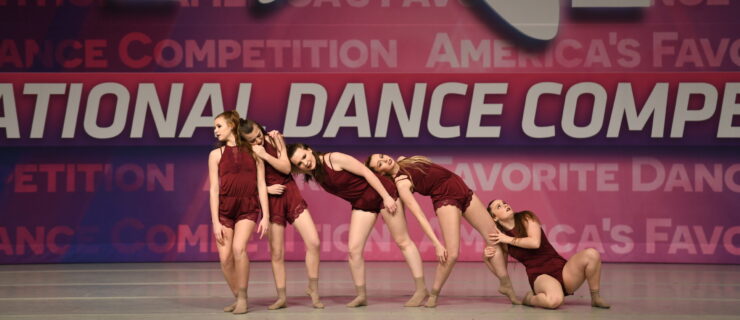How to Handle Competing Against Your Studio Teammates
Emily Smith, who teaches at Virginia’s Derek Wagner Dance Center while attending college, can still recall the pressure that permeated her competitive-dance studio. “Everyone on our team was around the same age, so our solos always went up against each other,” she says. “Some girls would get so upset if they didn’t win.”
At dance competitions, participants from the same studio often end up not just performing alongside but also competing against each other in solos and group routines—all within the same weekend. The situation can be stressful, confusing, and awkward, particularly for younger dancers. But it doesn’t have to result in comparisons and tears.
When Comparison Goes Too Far
Peer-to-peer comparison is natural, especially for dancers in their tweens and teens, according to Dr. Chelsea Pierotti, a former professional dancer and a professor of sports psychology at University of Colorado Boulder. But it can become toxic when heightened by the stresses of a competition weekend. Those pressures often “replace all the fun of competing with anxiety,” Pierotti says. Demanding that soloists beat out their competition can affect the whole studio’s performance. “You can’t expect cohesion and unity in your group numbers at competition if the same dancers feel pitted against each other as soloists,” Pierotti explains.

Dancers: Focus on the Positive—and Yourself
Michelle Leagans, competition choreographer, owner of Power Intensives, and author of the new dance journal Hey Dancers…Let’s Talk About It!—encourages dancers to be the type of teammate they’d want to have. “If you’re able to cheer and be happy for your friends, then they’ll want to do the same for you,” she says. “Eventually, the environment becomes more about friendship and encouragement than competition.”
Similarly, if conversations with peers begin to turn negative or mean, Pierotti recommends trying to shift to other topics. “It can be hard socially when you’re the only one not gossiping and ranking, but that distracts you from doing your own personal best,” she says. “Remember, everyone gets their own experience onstage; one dancer’s success is not another dancer’s failure.”
Leagans also suggests that dancers keep track of their own personal goals and successes from week to week, either with their teacher or through journaling. “Smoothing out your transitions, or nailing a turn sequence you’ve been working on, is a win that’s just as worthy of celebrating as first place,” she says. “It demonstrates that the only dancer you’re truly competing against is yourself.”
Teachers: Set the Standard
Ultimately, teachers are responsible for creating a positive competition culture within their team. Pierotti encourages them to be extra-conscious of favoritism around their dancers in class and rehearsal. “Everyone should be getting the same level of attention and critiques, which sets the tone that everybody is working hard and earning their success,” she explains.
Leagans recommends fostering studio friendships that go beyond competing, which will help teammates support each other even when the stakes are high. “I’ll use team games, big/little sibling pairings, holiday parties, and spirit-week dress-ups—anything fun that allows dancers to just enjoy being together,” she says.
And remind dancers that competing is not the only reason they dance. “Explain to your students that their work ethic and determination to improve in class is far more significant than what three judges think of them onstage on one particular day,” Leagans says.




